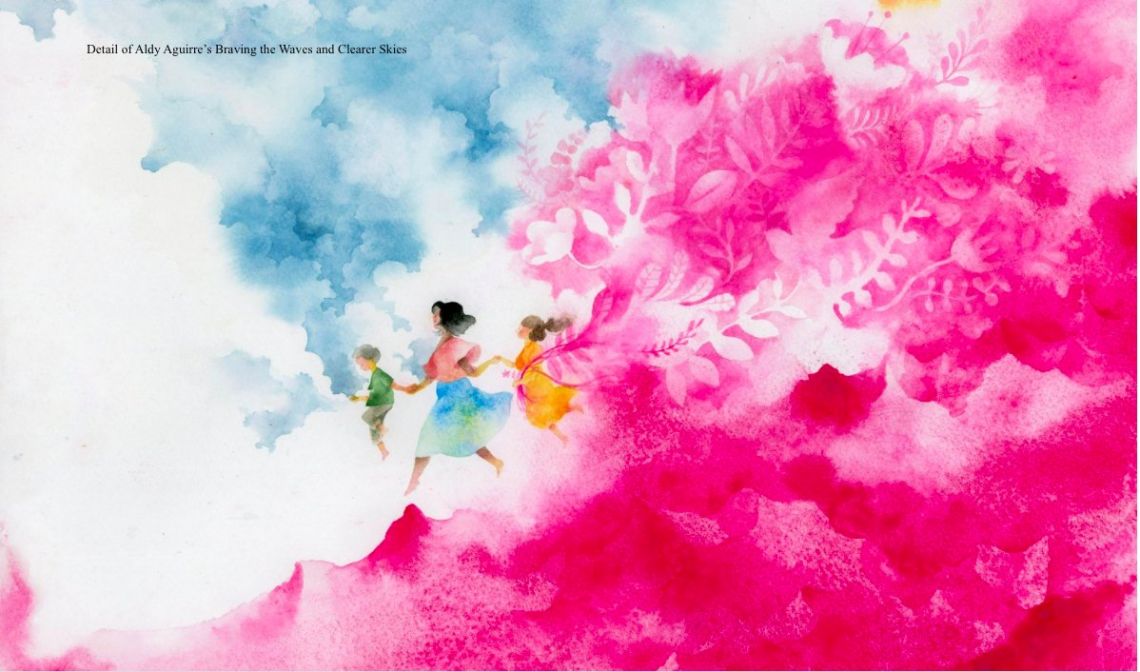Opening amidst the 36th anniversary of the EDSA People’s Power Revolution, “Mas Radikal ang Magmahal” is an online exhibit (www.radikal.ph) with more than 100 artists and artworks in a variety of medium: oil on canvas, acrylics, watercolor, wood, brass and steel, prints, assemblage, and even embroidery, as well as the use of digital technology.

Echoing the spirit of EDSA, the exhibit strongly captures the yearning of Filipinos to keep the democratic ethos alive through artmaking.
Inspired by Leni Robredo’s quip, “madaling makipagtalo; mas radikal magmahal” in response to the corrosive vehemence of trollers against critical discourse, the idea of an exhibit full of intentionality, was born.
A volunteer initiative and fundraising for Vice President Leni Robredo’s campaign for president in the May 2022 election, the exhibit was organized by Gigo Alampay, the founder and executive director of CANVAS (Center for Art, New Venture and Sustainable Development), a nonprofit organization that works with the creative community.

Jose “Butch” Dalisay Jr. wrote “The President We Deserve,” on October 28, 2021 in his column, Pinoy Penman 3.0— a plea for the return of decency and dignity in the nation, as encapsulated by the leadership values that Leni Robredo stands for. It went viral. Coming full circle, the artworks submitted to the Radikal exhibit are the artists’ response to Dalisay’s essay.
The exhibit
Kalimbahin is the Tagalog word between rose and lavender, or pink. Definitely, the color pink dominates the exhibition and don’t be too surprised, as it is Robredo’s campaign color. All shades of pink, from baby pink to stronger hues of fuschia abound, in general.

Light, hope, and new beginnings: A running theme in the exhibit is the strong expression of hope for better days. In the artworks, the radiance of light is used to signify new beginnings. Hope is expressed in lush plants and flowers blooming. Reynaldo Alejandro’s Lindenii exemplifies this sentiment. Other works celebrate the coming of a new dawn, an awakening at the end of a long dark tunnel, e.g., Aaron Asis in Liwanag sa Pagkakabuklod-buklod; Jeho Bitancor’s Tungo sa Liwanag; Michael Cacnio’s Sibol ng Pag-asa, in brass and stainless steel; Hannah Nantes’ Bukang Liwayway, an assemblage in wood, print, and found objects; and
Renz Baluyot in Bagong Umaga that depicts a fiery orange dawn breaking out amidst the ethereal blue sky.

Optimism and positivity can also be found in many works e.g., Braving the Waves and Clearer Skies by Aldy Aguirre, an illustrator of children’s books and a member of Ang Ilustrador ng Kabataan.
Fight for change, real change Other works clamor for radical change in governance. In other words, choose and vote wisely. Filipinos have been burned more than once, in their political choices. Calls to stand up, fight, and never give up are seen in the works of Elmer Borlongan’s Laban Lang, portraying a group of 10 pink-shirted men arms linked and facing outward in a circle; Sulong by Jonathan Madeja; or Tindog by Chad Montero.
Portraits

Not surprisingly, a number of artworks center on Leni herself, portrayed in a variety of context: she may be Aling Lugaw by Dansoy Coquilla, an artist known for his images of everyday Filipino life, with characters always looking upwards; a fighter in Alelia Ariola’s Ang Lumaban Nang May Puso at Tapang or in Imelda Cajipe-Endaya’s Inang Frontliner #3. Allyssa Bartoline’s 10072021 refers to the date when Robredo decided to run with the words “Buong buo na ang loob ko” echoing sheer determination, or Winner Jumalon’s image of Robredo as a Reluctant Visionary.
Daluyong
Two artists, Mark Justiniani (b. 1966, Bacolod, Negros Occidental) and Renato Habulan (b. 1953, Tondo, Manila) share the same title of Daluyong, by coincidence, in their works. “Daluyong” means a storm surge or big waves, as what the country had experienced during typhoon Yolanda, for example.

The two paintings refer to overcoming upheaval and destruction, social and ethical, in the political sense. In Justianiani’s Daluyong, a woman in pink blouse stands on a banca, leading with an itak, and surrounded by other people standing on their own bancas.
One of the most important figures in social realism in the country today, Renato Habulan in his Impasto Series #1.21 Daluyong, depicts a woman dressed in a baro’t saya with her arms hugging her shoulders, and standing firm amidst choppy waters. In the background, a luminous orange dawn is breaking out.
Whoever wins, the vision and struggle for a fair and just society in the artistic universe of Filipino artists, will persist. Always.